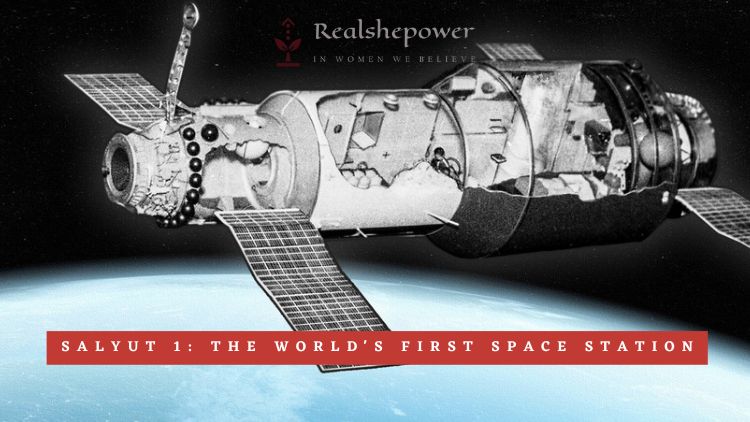Salyut 1: The Launch that Changed Space Exploration Forever


On April 19, 1971, the Soviet Union launched Salyut 1, the first space station in history, marking a major milestone in space exploration. In this article, we’ll explore the history, design, scientific achievements, and lasting legacies of this groundbreaking launch.
Table of Contents
History of Salyut 1: From Concept to Launch
The idea of a space station had been discussed for years prior to the launch of Salyut 1, with both the Soviet Union and the United States exploring the possibility of constructing a permanent orbiting laboratory. However, it was the Soviet Union that ultimately achieved this feat, launching Salyut 1 into orbit aboard a Proton-K rocket.
Salyut 1 was in orbit for 175 days before it was intentionally deorbited and burned up in Earth’s atmosphere. During that time, two Soviet crews inhabited the station, conducting a range of scientific experiments and investigations.
Design of Salyut 1: Overcoming Technical Challenges
The design of Salyut 1 presented a range of technical challenges for the Soviet Union, as building a space station required managing structural integrity in zero gravity, ensuring stable power supply, and developing communication systems capable of functioning in space. Despite these challenges, the Soviet Union successfully launched Salyut 1 into orbit, with the cylindrical module measuring 4.15 meters in diameter and 15.8 meters in length, and an internal volume of 99 cubic meters.
Salyut 1 was equipped with a variety of scientific instruments and equipment, including a telescope and a set of solar panels. The station was capable of supporting up to three cosmonauts at a time, providing a living and working space for extended missions.
Scientific Achievements of Salyut 1: Paving the Way for Future Missions
Salyut 1 served as a research laboratory, enabling Soviet scientists to conduct a range of scientific experiments and investigations. Some of the key scientific achievements of Salyut 1 included:
- Observing Earth’s weather patterns, studying the Earth’s magnetic field and the behavior of the aurora borealis.
- Conducting experiments in biology, astronomy, and geophysics.
- Developing new space technologies, such as new materials, communication systems, and propulsion systems.
These scientific achievements laid the foundation for future space missions, including the development of the International Space Station (ISS).
Legacy of Salyut 1: Inspiring New Generations of Space Explorers
The launch of Salyut 1 forever changed the course of space exploration, inspiring new generations of scientists, engineers, and space explorers. The lessons learned from Salyut 1 enabled the Soviet Union and other nations to develop increasingly advanced space technologies, such as modular space stations, space telescopes, and robotic probes.
Today, the International Space Station stands as a testament to the legacy of Salyut 1. The ISS is a collaborative effort between the United States, Russia, and other nations, and has enabled scientists to conduct a range of scientific experiments and investigations in a microgravity environment, as well as test new technologies and study the long-term effects of space travel on human health.
Salyut 1 also inspired a new wave of space exploration, with numerous countries and private companies now investing in space travel and colonization. As more advanced space technologies are developed, the possibilities for exploration and discovery continue to expand.
Conclusion: Salyut 1 and the Future of Space Exploration
The launch of Salyut 1 in 1971 marked a major milestone in space exploration, paving the way for future missions and inspiring generations of space enthusiasts. The scientific achievements of Salyut 1, combined with its technical and design innovations, continue to influence the development of space technologies and exploration.
As we look towards the future, the lessons learned from Salyut 1 remind us of the importance of collaboration, innovation, and determination in the pursuit of scientific discovery. With new space missions and technologies on the horizon, the legacy of Salyut 1 continues to inspire us to push the boundaries of what is possible in space exploration.
